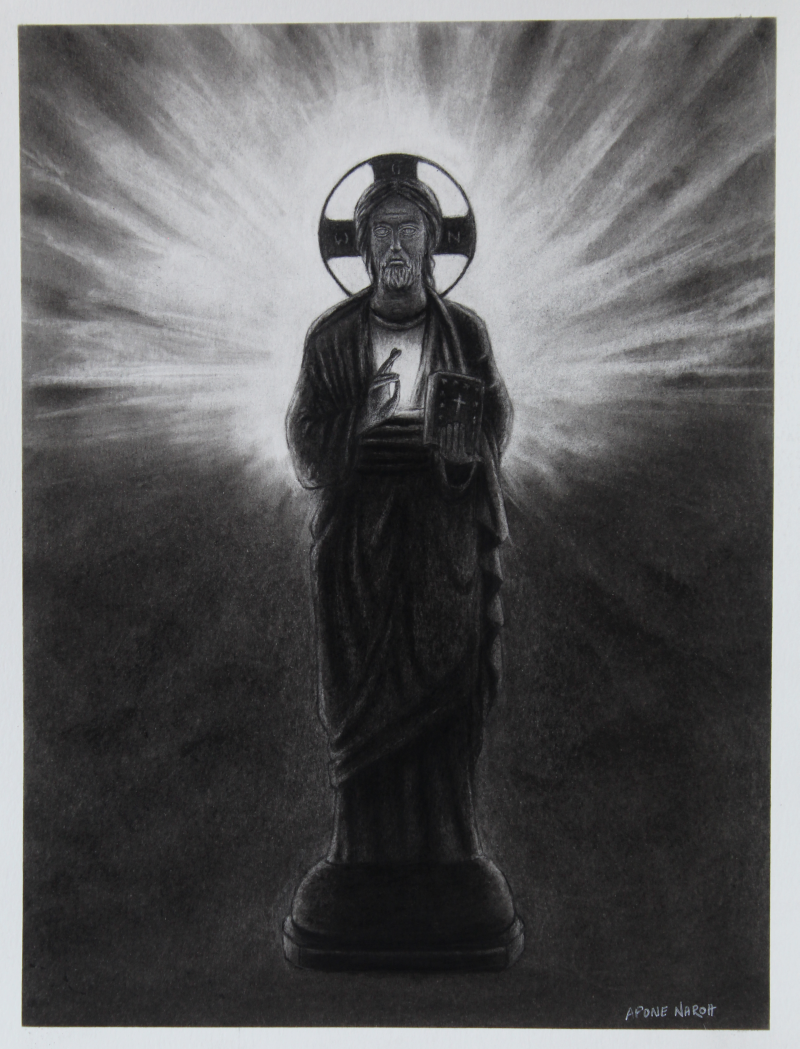
Dr Brainerd Prince
Idol worship, an important religious practice that has been at the heart of distinguishing one person from another, one community from another and one religion from another, particularly in our Indian subcontinent. The Hindus have been termed as idol worshipers and both the Christians and the Muslims view themselves as non-worshipers of idols. However, this idea of idol worship has not been sufficiently problematized and reflected upon in the public space.
But I would like to suggest that our conversation on idols has to be done in comparison and contrast with the idea of the icon. This will bring clarity and precision to what we mean by these terms. While both terms mean ‘image’ of some kind, there are distinctions that will help us get a good grasp of these similar and yet dissimilar terms and hopefully clarify our response to them. I would like to share a few insights on idols and their worship.
Firstly, what are idols? Simply put, they are ‘things’ and ‘objects’ that represent the divine. The deeper definition is that idols are those things that have become an end in themselves. In other words, their unique role lies in the manner they replace and even displace the gods that they represent. It is an objectification of the divine in material form and considered as God. This material form is admired, revered and worshipped. The idol IS God and in becoming God, displaces God. This is the subtle and yet dangerous power of an idol. It is able to make the already invisible God, further invisible, by taking its place. Hence, idol worship is an abomination in many religious traditions, particularly in the Judeo-Christian traditions, where God is considered to beinvisible and immaterial and yet He alone is to be worshipped. Therefore, for God to be reduced to a material form and then to be displaced by it, is in fact a creation of a false and a rival godand a great abomination. Thus, idol worship that displaces and replacesthe worship of the true Godhas been condemned and considered as a serious offence.
 This pencil illustration ‘Windows into Heaven' is by Apone Naroh, a Naga visual artist based in Kohima. To get in touch, contact: aponenarohart.business.site or (+91 7628863437)
This pencil illustration ‘Windows into Heaven' is by Apone Naroh, a Naga visual artist based in Kohima. To get in touch, contact: aponenarohart.business.site or (+91 7628863437)
Secondly, idols are not only material representations but can also be mental conceptions.Although this type of idol is non-material, yet it precisely plays the role of a material idol. These conceptual idols, too are an end in themselves, even if they are not material that can be touched seen and felt. Let’s take the example of ‘Krishna’. We have absolutely no access to the original person ‘Krishna’ and for that matter, do not know with certainty which historical Krishna are we referring to, when we use the term. The story of Krishna has evolved from 500BC to 500AD before getting canonized and has a long history of commentarial traditions. But today, when we use the term Krishna, we have a conception of ‘Krishna’ in our minds. This conceptual image is informed by all these various historical sources, folktales and legends. But the image in our mind is conceptual. Within Islamic and Christian traditions too, although perhaps there is much more evidence for the historicity of their central figures, and do not have any material form like their Hindu counterpart, yet, it is the mental images and conceptions of Christ and Allah that define the understanding of the deity. Often, this mental image becomes static and an end in itself. When we offer ourworship to this mental image in our heads and begin to develop a relationship with this mental conception, then,I claim, we too are worshipping idols which are quite similar to the material idols, as in both cases, the idol becomes an end in itself.
Thirdly, we now need to reflect on ‘icon’which in contrast is to be understood differently from an idol. However, there is an intermediate step that is very helpful to make the transition from idol to icon. Following the work of Jean-Luc Marion, the French Catholic Philosopher-Theologian, we too can affirm that we cannot escape from today’s world of images. We are surrounded by non-material and virtual images, particularly in the world of internet and social media. This however can be seen as an intermediate step between the idol and the icon which will transition our understanding from idols to icons. Virtual images, like an idol, do capture and arrest in themselves what they represent. And yet, in our virtual world, we do know that these images are not an end in themselves. They are mere representations of the ‘real’ world. No one looks at a photo, digital or otherwise, and concludes that this is a living person. All of us know the difference between living persons and their photographs respectively. We recognize that the images and pictures that we enjoy observing are not an end in themselves, and that they are only representations. The person they represent moves and has her being beyond these virtual images. In this sense, the virtual image acts as a window that directs our gaze through itself to the thing it represents. Now, we have finally arrived at icons.
Fourthly, the idea of icon is dominant in certain traditions such as the Eastern traditions of Christianity. These Eastern traditions boast of many images of Jesus and other entities. Even the Catholics have figures and statues of not only Jesus or his family but also of many saints. Protestant Christianity has broadly termed all these as idolatrous. But these traditions do not necessarily view these images and statues as idols, and I want to argue that at least the Eastern Orthodox tradition views them as icons. They are well aware that these representations of Jesus are NOT Jesus, himself. There is absolutely no confusion here. However, these images play an important role in drawing the gaze of the worshipper and devotee. These images as icons act as a conduit, in other words, they arrest the gaze of the worshipper and then redirect it beyond themselves to the deity itself. Some have called these icons as windows into heaven. They help in holding our attention, maintaining our focus and then redirecting them to the invisible and transcendent deity. What is interesting is that most Hindus would say that their so called ‘idols’ are in fact ‘icons’ who merely represent materially, the transcendent God.
Finally, icons play this strange and yet strategic role of a window. They are gates of heaven that open the doors to the transcendent one. What is interesting is that even idols, both material and conceptual, as well as virtual images, have the potentiality to play the role of a window into the heavens as icons. Perhaps, if we keenly speak to the so called ‘idol-worshippers’ and understand first hand, the role played by their idols, we might be happily surprised that they are not really idol worshippers, but rather icon worshippers who use these figures and images as gateways to heaven.
The knife of critique is always double edged and cuts both ways. I am equally interested in asking those belonging to traditions that disown idols, like those belonging to the Judeo-Christian faiths, if they are consciously or unconsciously nurturing conceptual idols. I would like to probe if their doctrinal tenets and conceptual frames have become so tight and their conceptions of the divine so rigid that they have become an end in themselves rather than being windows that lead us to the transcendent one.
The truth is, it is easier to work with anything dead, including idols, who are mute and deaf rather than with anything that is alive and kicking. It is extremely difficult to engage with anything alive – be it a pet, another human being or God. Especially when it comes to the divine, who is invisible and without form, it becomes further difficult if not impossible to relate to such an entity. How does one relate to a being that claims to be present, when in fact there are no explicit traces of their immediate presence?
I would like to flush this out a bit further. We close our eyes and praybelieving that there is someone listening. However, we get no indication in our material world that we are in conversation with another person. Praying is differentfrom having a conversation with another living person, who actively participates in the conversation. Similarly, we claim God speaks to us, and yet that experience of hearing God cannot be compared with how another human being speaks with us. More often than not, irrespective of the quality of relationship we have cultivated with God, we find that God is silent, similar to being dead than alive. Perhaps, that is why it is easier to negotiate and relate with idols.
I just want to end with this – if God is God, and he is real, then all our human thoughts and representations, will just be that – human representations. God will always be beyond these human representations. However, all our idols and conceptions, material and mental, can be powerfully used as icons,as windows into heaven, through which we can reach the transcendent one and perhaps then the gift of his revelation will be as extraordinary and special as his very being.
Dr Brainerd Prince teaches and tutors students on academic and research skills. He consults for higher education institutions on research, academic skill training and designing research programmes. Contact: samvada.research@gmail.com





